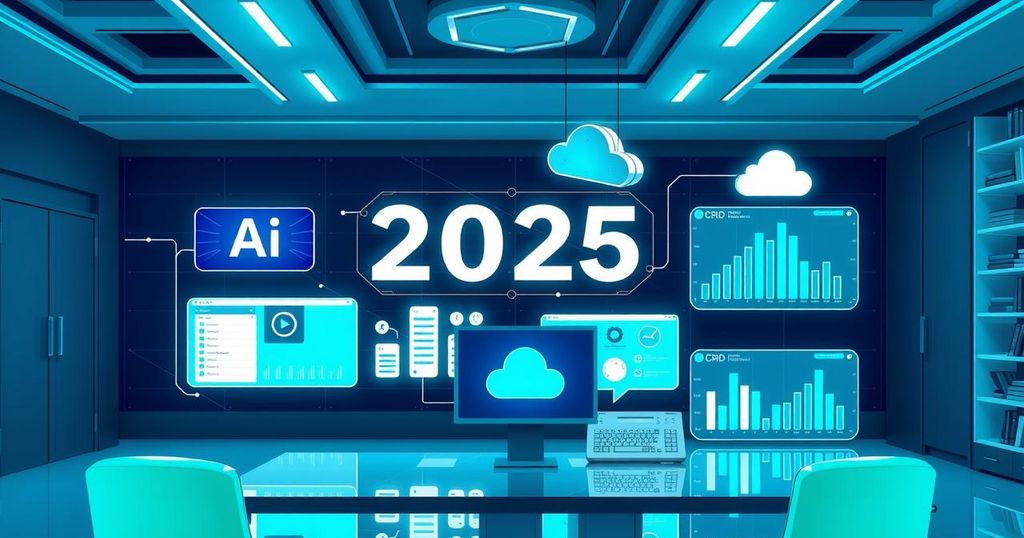Tech Trends Shaping Small Businesses as We Approach 2025
This article highlights nine key technology trends that small businesses need to watch as they prepare for 2025. It notes the rise of AI as an essential tool, the need for human involvement in customer service, increasing accessibility of tech, and the importance of cybersecurity. The article also discusses growth in remote work solutions and cloud contact centers, while addressing the economic landscape and hardware innovation impacting the industry.
Small businesses are in a race against time. With competition heating up and customer expectations rising, staying on top means adapting with technology. From AI tools to unified communication platforms, the landscape of small business tech is evolving rapidly as we march into 2025. We’ve sifted through data, conducted research, and consulted experts to outline the must-know trends in technology that are shaping the future for small enterprises.
First off, let’s talk about AI. It’s no longer just a buzzword; it’s become a central part of business strategy. The SMB Group surveyed small business owners and found two-thirds reported significant or modest impacts from AI, with many expecting that trend to grow. This includes everything from chatbots in customer service to smart suggestions in ride-sharing apps. Modern AI tools, like the Zoom AI Companion, analyze data to assist in brainstorming, summarize lengthy documents, automate meeting notes, and even conduct advanced searches through extensive databases.
In the world of customer service, even with the shiny advancements of AI, the need for human touch remains. Yes, AI can manage tasks efficiently, but can it replace the empathy that a human brings? It seems not. Research commissioned by Zoom shows 89% of people want friendly agents, and 90% expect them to know their stuff. What does this mean? AI is a player in customer service but certainly not the star.
The accessibility and affordability of AI are changing the game, too. As of October 2023, surveys revealed that a typical small business uses around four AI tools, with 24% reporting they utilize at least seven. This surge is driven by decreasing costs thanks to cheaper hardware, cloud solutions, and open-source platforms. The flexibility of these tools has also paved the way for easier implementation without hefty upfront costs. Just take a look at how Zoom has positioned itself—its AI Companion is included with paid plans, making it a no-brainer for small business owners.
Meanwhile, cloud contact center software is booming. The growth has been palpable over the last few years, largely because small businesses crave flexibility and a cost-effective way to scale. Projections are showing the cloud contact center market could reach over $82 billion by 2030. Companies that once couldn’t afford robust customer service tools can now offer features like live chatbots and self-service options without breaking the bank. Reports indicate that 83% of small business leaders believe that tech can streamline their operations better than ever before.
But let’s face it; cybersecurity is a lingering elephant in the room. The increasing cyber threats have many small businesses worried, yet a significant portion of owners feel overly confident in existing measures. Only 58% provide cybersecurity training to their employees, which is alarming considering the reality of being an easy target for cybercriminals. It’s crucial for businesses to prioritize security and invest wisely in protective tools and practices.
As remote work becomes the norm, there’s a rising demand for collaboration technology. The global market for collaboration software is slated to explode from $5.8 billion to almost $20 billion in the next decade. This means businesses need reliable tools to keep their teams connected, even if they can’t meet face to face. Video calls, team chats, and project management tools are becoming essential for keeping enterprises running smoothly.
Interestingly, it seems that while customer-centric tech is obviously important, many small businesses are putting their money into tools that make their operations more efficient first. A survey showed that 61% focused on operational upgrades before leaning into customer-focused solutions. This tells us that they see operational efficiency as the bedrock of business security.
All this talk of uncertainty in the economy has left small business owners feeling worried. 84% reported concern in August 2024 about the economic state overall. However, a silver lining is that most still feel confident about their own job security. It’s an odd dichotomy, but it speaks to an underlying resilience amongst small business leaders navigating this tricky landscape.
Lastly, hardware innovations are paving new paths for businesses looking to leverage AI. Exciting advancements in the semiconductor industry have made running AI applications not just more efficient but also less costly. As these new technologies emerge, small business owners have access to equipment that powers their capabilities without overspending.
And so, as we edge towards 2025, stay aware of these tech trends—it’s not just a smart business move, it’s necessary. The future looks promising, with platforms offering collaboration, customer support, and more, all tailored to boost small businesses. To learn more, check out Zoom Workplace for insights on navigating this dynamic landscape.
As we look to 2025, small businesses must remain vigilant in adapting to rapidly shifting technology trends. AI is increasingly vital, while human interaction in customer service continues to hold importance. With a growing reliance on cloud solutions and an urgent need for solid cybersecurity measures, business owners have a lot on their plates. Remember, while operational efficiency often takes precedence in tech investments, the importance of customer connection can’t be overlooked. Finally, hardware advancements promise to usher in exciting new AI capabilities, potentially making life easier and more productive for small businesses in the coming years.
Original Source: tech.eu




Post Comment